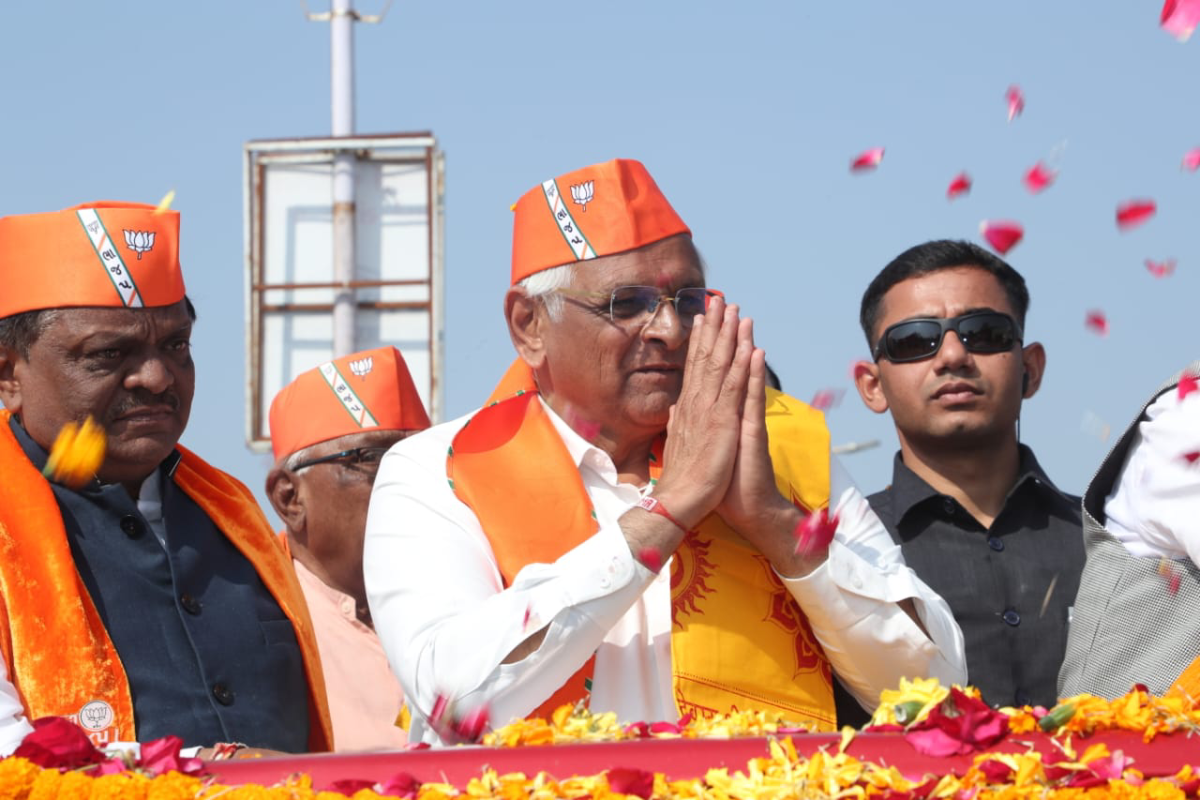

Bhupendra Patel, who is scheduled to take oath for the second time on December 12, broke his own 2017 record to win his seat, Ghatlodia, by a staggering margin of 1,92,263 votes.
A protege of current UP governor Anandiben Patel, Bhupendra won with the highest margin of 1,17,750 votes in 2017, breaking the previous record of his mentor, who had won by 1,10,395 votes from Ghatlodia in 2012.
Born on July 15, 1962, in Ahmedabad, Bhupendra Patel holds a Diploma in Civil Engineering from Government Polytechnic College. He’s a member of Rashtriya Swayamsevak Sangh (RSS) and known to enjoy PM Modi’s confidence.
Addressing a crowd at BJP HQ in Delhi on Thursday, PM Modi praised Bhupendra Patel for clinching an unprecedented victory in the history of Gujarat politics.
He said, “I had appealed to the people of Gujarat to help break my record. And I had promised that I would spare no efforts to help Bhupendrabhai break Narendrabhai’s (my) record. But, the citizens of Gujarat made a new record of breaking all records”. During his time as Gujarat’s chief minister, Narendra Modi had been elected thrice from Maninagar assembly seat consecutively in 2002, 2007 and 2012, winning more than 1 lakh votes each time.
Before winning the MLA seat from Ghatlodia in 2017, Bhupendra Patel held several key posts in the state municipal administration. A builder by profession, he began his political career in 1995 after being appointed the Chairman of the Standing Committee of Memnagar municipality. He fought his first Ahmedabad Municipal Corporation election from Thaltej ward in 2010, and went on to twice become the AMC standing committee chairman. From 2015-17, he chaired the Ahmedabad Urban Development Authority (AUDA), the town planning authority for the city’s periphery.
It was quite a surprise in the political sphere when Bhupendra, a first time MLA from Ghatlodia was elevated to CM post in 2021 replacing Vijay Rupani. He took over the CM chair at a time when floods hit Gujarat killing 6 people. Jamnagar, Rajkot, Junagadh as well as other districts of Saurashtra were severely affected by heavy rains in a short period of time resulting in flood. Patel’s year-long term saw various challenges: agitations over pay grade, demand for the implementation of the OPS (Old Pension Scheme), a controversial paper leak of a government recruitment exam, an outbreak of Lumpy Skin Disease, hooch tragedy killing 42 people, a major drug haul from Mundra port and remission of the 11 convicts of the Bilkis Bano gangrape case.
But despite these roadblocks, Bhupendra Patel ensured the 7th consecutive victory for BJP.
His term saw policy driven action earning his administration the sobriquet – ‘Policy state’. State policies like Semiconductor policy, New Biotechnology Policy, New Sports Policy, New IT and ITeS policy and SSIP 2.0 laid down the premise for the future of Gujarat. Bharuch district achieved 100 percent success in the implementation of Centre-State projects. Modhera village in Mehsana district became the first fully solar-powered village. Gujarat today produces 16,588 MW power through non-conventional sources as compared to 99MW in 2002. Bhupendra Patel also inaugurated the world’s first ‘Global Centre For Traditional Medicine’ in Gujarat.
His appointment as Chief Minister of Gujarat took everyone by surprise, and was considered as a ‘filler CM’ before the completion of BJP tenure. Congress veteran Arjun Modhwadia said in an interview to The New Indian, “A TV survey found that no one in Gujarat knows who the CM of their state is.” But his spectacular feat and winning a second term as a Chief Minister will finally place him at the centre of Gujarat politics.